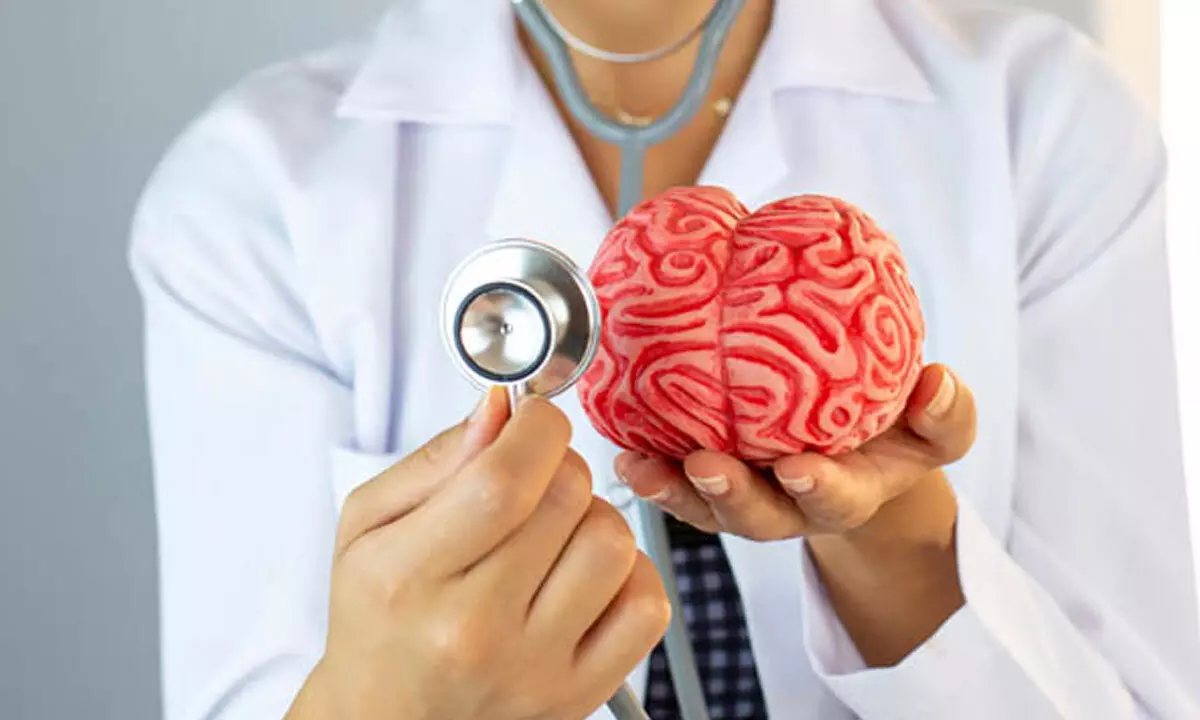Live
- The Rana Daggubati Show at IFFI 2024, Redefining Celebrity Talk Shows
- TN govt to reject Tungsten mining proposal in Madurai district: Forest Minister
- Bhupesh Baghel threatens defamation case over allegations in Bitcoin scam
- I want to have that chance of playing in IPL, says Swastik Chikara ahead of mega auction
- Damson Technologies Inaugurates State-of-the-Art Manufacturing Facility in Ahmedabad with Rs. 200 Crore planned Investment
- Waqf row: BJP stages protest condemning land grab in Karnataka
- President Droupadi Murmu Graces Koti Deepotsavam in Hyderabad
- South Korean court sentences ex-fiance of Olympic fencing medalist to 13-yr prison term
- Posani Krishna Murali Announces Exit from Politics
- Allu Arjun and Sreeleela to Ignite the Stage with Pushpa-2’s Special Song
Just In
Brain Tumours - New Horizons, New Thoughts


Representational image
A century has elapsed since the first successful brain tumour surgery was performed by the "" FATHER OF NEUROSURGERY "" DR HARVEY CUSHING.
A century has elapsed since the first successful brain tumour surgery was performed by the "" FATHER OF NEUROSURGERY "" DR HARVEY CUSHING.
In the following 70 years progress was made in all basic aspects of diagnosis and management of brain tumours.
The introduction of CT SCAN in 1971 the brain tumours diagnosis became fast,accurate,specific and easier. The lengthy , laborious,risky and invasive investigative procedures became the things of past.
In INDIA about 40-50,000 people are diagnosed with brain tumours and successfully managed with very good results.
Even then the fear of brain tumour diagnosis and pessimism regarding the surgery outcome are prevalent even today.
The popular impression in general public is that brain tumours are VERY COMMON & all are UNIFORMLY CANCEROUS is without scientific basis.
In fact brain cancers incidence is 2-3% per one lakh population,amounting to LESS than 2% of all cancers in human body.
It is very important to note that only ONE THIRD (1/3)of are all brain tumours are cancerous while there about 125 varieties of such .
Equally important to state that chances of any person to develop a MALIGNANT TUMOUR in their life span is LESS Than 1% .
Presenting symptoms are::
Morning headaches mainly in forehead
Double vision
Epilepsy
Memory disturbances
Loss of vision , smell , hearing particularly ONE SIDE
weakness of one half of body
Swallowing difficulty
Walking disturbance
Unclear speech
Menstrual cycle irregularity
Drowsy or unconscious
INVESTIGATIONS ::
Ct scan brain: PLAIN & CONTRAST MRI BRAIN WITH CONTRAT PET SCAN BRAIN —rarely
Causative factors of brain tumours::
For a long time it was said to be UNKNOWN
Now with improved research and surveillance few causes are mentioned like:
1 Stress
2. Exposure to radiation
3. Exposure to chemicals like PESTICIDES, OIL PRODUCTS, RUBBER , CHLORINATED INDUSTRIAL SOLVENTS
4. Genetic factors and family history
5. Life style choices like Wrong diet disrupted sleep Sedentary life style Alcohol SmokingObesity
6. Vitamin deficiency like Vitamin c, beta carotene , folate
Brain tumours can develop in all AGE GROUPS mainly CHILDREN & ADULTS
Brain tumours are mainly two Varieties
PRIMARY & SECONDARY
PRIMARY: Tumours developing in brain, brain coverings & cranial nerves.
SECONDARY: Also known as METASTATIC TUMOURS from other parts of body like THYROID ,LUNG, BREAST , KIDNEY & INTESTINES secondary tumours amount to 40% of total brain tumours.
Once brain tumours are confirmed the line of treatment is SURGERY.
Nowadays tumours of less than 2 CENTIMETRES size are managed with radiotherapy if there is no significant brain compression.
Advances in surgical techniques and surgical equipment like NEURONAVIGATION, ULTRASOUND SURGICAL ASPIRATOR , OPERATING MICROSCOPE, intraoperative MRI and CT Scan, cortical mapping and AWAKE PRECEDURES have made possible access to & total removal of tumours with presentation of vital brain functions.
Of the primary brain tumours there are TWO IMPORTANT DIVISIONS.
1. CANCEROUS or MALIGNANT
2. NONMALIGNANT of BENIGN
BENIGN tumour are mostly removed completely with total CURE to patients. Some residual tumours in a critical brain area are managed with latest radiation methods.
Cancerous tumours are excised to the maximum possible without compromising important brain functions followed by adjuvant latest modalities of treatment.
The most malignant primary brain tumour called as GLIOBLASTOMA MULTI FORME was associated with poor outcome and testing the nerves of affected patients as well as treating neurosurgeons.
In fact almost half of these patients are alive at 2 YEARS an impressive result considering previous survival was thought to be LESS THAN A YEAR!!!!
It is no exaggeration to state that few lucky patients with GLIOBLASTOMA are living for 5,10,20 years
This is possible with advances in several areas like :
MOLECULAR ONCOGENESIS with identification of deletions in chromosome segments 1P &2Q
ADVANCES in imaging like functional localisations,spectroscopy,diffusion and perfusion measurements,diffusion tensor imaging to visualise white fibre tracts
Effectiveness of CHEMOTHERAPY and delivery of drugs placing catheters and TARGETED THERAPY
Most recently STEM CELLS have been used to target brain tumours
MULTIDISCIPLINARY approach in addressing the diversity and complexity of brain tumours is the key for successful results
The few important points to remember:
1. NOT ALL BRAIN TUMOURS ARE CANCEROUS
2. Whole skull is NOT OPENED during surgery
2. Brain tumour surgery is reasonably SAFE
3. Most of the time patient is CONSCIOUS after surgery
4. Within 12 hours patients are given feeds
5. Mobilisation at the earliest
6. Early diagnosis and treatment is mandatory for good results
7. Present day RADIOTHERAPY techniques are SAFE DELIVERS HIGHER DOSES IN PRECISE LOCATION & LEAST DAMAGE TO THE SURROUNDING NORMAL BRAIN STRUCTURES

© 2024 Hyderabad Media House Limited/The Hans India. All rights reserved. Powered by hocalwire.com






